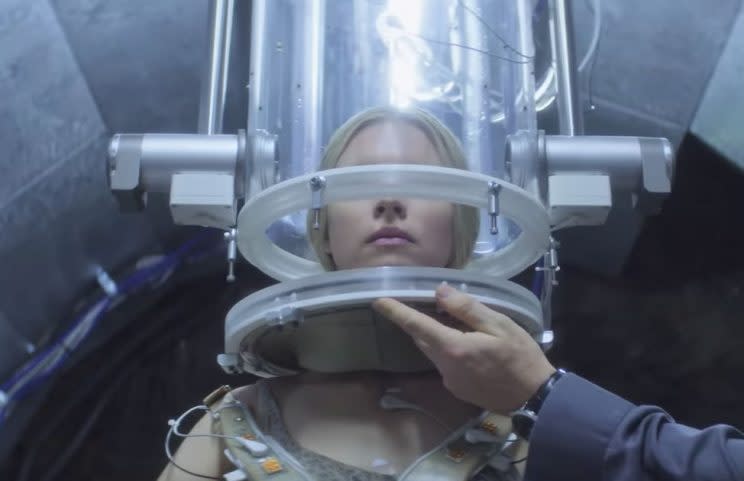‘The OA’: Your New Holiday Binge?

A very shaggy-dog story that wanders into unpredictable dimensions, The OA seems to arrive with “Cult Item” stamped all over it. This eight-part series has been plopped onto the Netflix site with little buildup, an elliptical trailer (see below), and some word-of-mouth that this may be a new obsession for those of you looking to escape from your Uncle Morty’s boring anecdote at the family Christmas party about that time he bought Bob Dylan lunch in Hibbing, Minn.
The OA and your Uncle Morty do have one thing in common, though: the Midwest. A big chunk of The OA is set in Michigan. In a chilly suburban town there, a young woman reappears after a seven-year absence. I can’t begin to describe even the merest basics of its convoluted plot without giving some things away, so consider this your SPOILER ALERT: SOME PLOT POINTS IN THE OA FOLLOW.
The girl is Prairie Johnson, played by the show’s co-creator, Brit Marling, and when she vanished from her life with her adoptive parents (Scott Wilson and Alice Krige), she was blind, but now she can see. Soon enough, semi-famous and dubbed the “Michigan Miracle,” she attracts a ragtag assortment of high schoolers fascinated by her, including a dreadful bully, Steve (Patrick Bigson), and an unhappy teacher, Betty, played by Phyllis Smith from The Office. Prairie starts telling her new chums the tale of her years of disappearance. They are transfixed — indeed, they’re transformed: Prairie’s story fills them with hope and purpose.
The tale she tells them, and us, is a richly complicated one that includes Prairie’s long-lost Russian father and her kidnapper — a scientist played by Jason Isaacs (Harry Potter; Brotherhood) who performs experiments on Prairie and (at first) three other prisoners in a laboratory underneath his home.
In the course of her captivity, Prairie falls in love with one of her fellow prisoners, Homer (Emory Cohen), and she acquires a new name: “The OA” — it sounds like “Oh-ahh,” although even the OA herself concedes, “or make it’s like ‘away,’ I don’t know.” Neither do I, OA. There are daring escape attempts and a lot of straight-faced mumbo-jumbo about alternate realities and how “death is not the end.” We jump back and forth between Prairie’s tale and her present, where she and her suburban friends take on new lives as secret adventurers. You are definitely supposed to wonder whether Prairie is a good influence on them, or a possibly deleterious one.
The OA taps into conspiracy theories, abduction scenarios, the true-crime genre, sci-fi, speculative fiction, the cult of angels, and art films. People snatch birds out of the air and eat them. Riz Ahmed, star of HBO’s The Night Of, pops up as the world’s most sincere but confused post-trauma therapist for Prairie/OA. The show was co-created by Marling and director Zal Batmanglij, the team that also did the mysterioso, woo-woo films Sound of My Voice and The East. The OA is determinedly eccentric — in the premiere episode, you don’t even get to the opening credits until you’re 57 minutes into the story.
I’ve read a few comparisons to Stranger Things, the idea being that this is Netflix’s next big binge item. Well, The OA is better than Stranger, but, mind you, that’s coming from someone who thinks Stranger Things is overrated. I have to give Marling and Batmanglij credit: I don’t usually have much patience for humorless, convoluted hooey like this, but their narrative pacing, and some of the performances — including those of Marling, Gibson, and Smith — are enthusiastically committed and effective.
The ending, though — oh, boy, the ending. It was deeply unsatisfying to me, even as I suspect there are going to be lots of viewers who’ll contort themselves into rationales for why it’s actually brilliant. Let the debates about this wild, woolly, weird project begin.
The OA is streaming now on Netflix.


